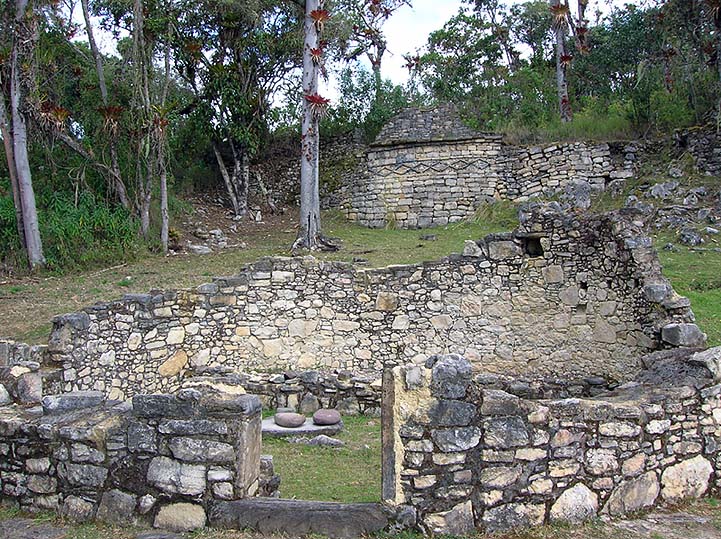Reviving the Inca Trail – Searching for the lost city of Kuelap

On Outdoor Revival we have a lot of readers that travel, and this is a place you should get into your itinerary as a place well worth visiting.
Kuelap is the lost city of the Chachapoya people. The monumental ruins rise high above the Utcubamba valley to an altitude of 9843 feet (3000 meters). Built in the 6th century AD, Kuelap has one of the worlds biggest exterior stone walls, and today its size makes it a unique archaeological site, and one of the largest stone constructions in the Americas.

Some historians and archaeologists believe that the massive walls were built for defense against other tribes, while others claim that it was a cultural center for the Chachapoya. It was rediscovered in 1843 when a local judge was traveling around making a survey of the area.

The most beautiful way to reach the site is by doing the three-day hike. Kuelap is approachable from two directions, although both start from Chachapoyas and both trails are hard to track and hike without a guide, it is not impossible to do it on your own if you don’t mind getting lost a few times. One way to get to Kuelap is to go to the little village of Levanto, then to the town of Tingo the next day, and to hike up to Kuelap on the last day.
When you start your journey, you can get a ride up to Huancas and visit the Sonche Canyon. There you can enjoy the breathtaking views before starting the hike to Levanto which should take you between 5 and 6 hours. Many people get lost, but that shouldn’t overly worry you because even if you do get lost in the forest, as soon as you make it uphill you will come to the road. However, for most of the hike, you are supposed to follow the Inca Trail which can be a real challenge, especially with the long uphill sections.



Just before you reach Levanto, you can visit the archaeological site of Yalape, an urban center of the Chachapoya people which dates from 1100 to 1300 AD.
The site also contains the typical Chachapoya cylinder buildings, decorated with rhomboid and zigzag friezes. 30 minutes on from the site, you will arrive in the little village of Levanto. Don’t expect much from it. There is one “kind of” hotel, that offers very cozy rooms, but no hot water or kitchen. However, there are two “kind of” restaurants in Levanto where the meals are very cheap.



The next day you are supposed to start hiking towards the town of Tingo. It isn’t as far but sometimes the road is untraceable. You should note that this is not a popular hike and sometimes the trail is covered with plants and branches so that you would never think that you are supposed to go there.
This route is very exhausting, especially if you get lost. You might have to go through the plants, cutting them and clearing them with your hands. But, that’s the way, it’s the Inca Trail. It just might not have been used for a while.


The second day is going up and down, up and down, crossing a river and the only other inhabited place on your way will be the town of Magdalena which is on the neighboring hill across from Tingo. Even though you can see it, it still requires a two hour hike to reach it. First downhill and then uphill. Well, Tingo is a common place for tourists who don’t like hikes and start their visit to Kuelap from there, taking the “teleferico” (like a cable car) up to the ruins.
In Tingo you can find more places to stay and eat, but the prices are a bit higher than Levanto and Chachapoyas. However, after a long hike, none of that matters. Only a warm shower and a bed which you can find in any of the hostels.
Now, the last day, you should start hiking early in the morning. Kuelap seems close, but the road is steep and exhausting. And it is all uphill. It can take you few hours, depending on your pace and energy. No matter how exhausted you are at the end, you will be rewarded with the sight of Kuelap, worth “a million dollars.” It is an enormous walled city, 1969 feet (600 meters) long and 361 feet (110 meters) wide.




There is a great deal to offer in this region, go there and be pleasantly surprised by the Chachapoya culture and history.
If you have any comments then please drop us a message on our Outdoor Revival Facebook page
If you have a good story to tell or blog let us know about it on our FB page, we’re also happy for article or review submissions, we’d love to hear from you.
We live in a beautiful world, get out there and enjoy it.
Outdoor Revival – Reconnecting us all with the Outdoor
